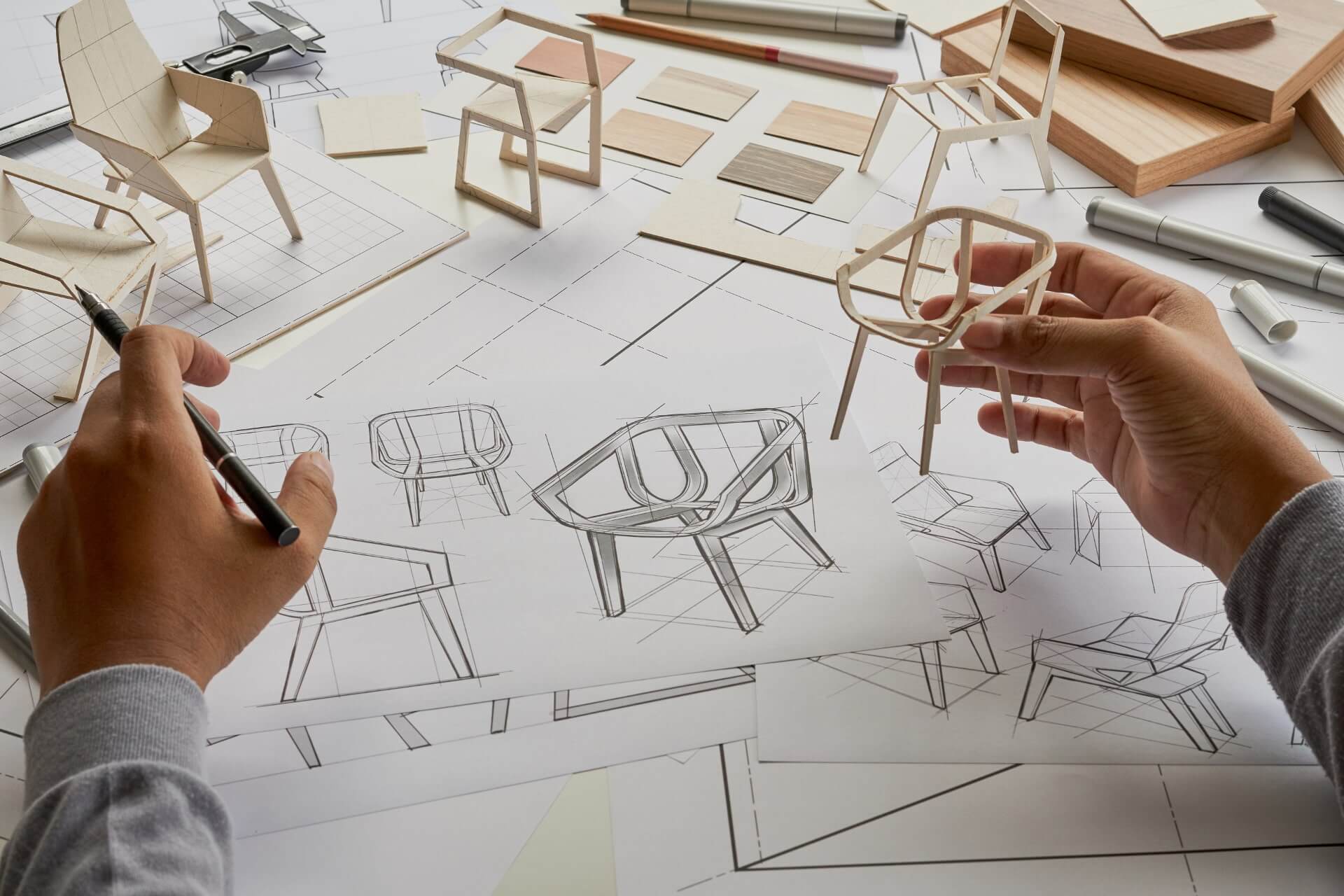

Furniture
How To Become A Window Dresser
Modified: December 7, 2023
Learn how to become a skilled window dresser, with a focus on furniture. Enhance your skills in visual merchandising to create stunning displays that captivate customers.
(Many of the links in this article redirect to a specific reviewed product. Your purchase of these products through affiliate links helps to generate commission for Storables.com, at no extra cost. Learn more)
Introduction
Window dressing is an integral part of the retail industry. It involves creating visually appealing displays in store windows to attract customers and showcase products in an enticing way. A skilled window dresser has the ability to captivate passersby, draw them into the store, and ultimately influence their purchasing decisions.
If you have a passion for design, creativity, and the ability to think outside the box, a career as a window dresser may be a perfect fit for you. In this article, we will discuss the steps you can take to become a window dresser and excel in this exciting field.
Window dressing requires a combination of artistic flair, attention to detail, and a deep understanding of consumer psychology. Your role as a window dresser will be to create visually stunning displays that align with the brand image and effectively communicate its message to the target audience. A successful window display not only enhances the aesthetic appeal of a store but also drives foot traffic and boosts sales.
To become a window dresser, you should possess a natural talent for design and possess excellent visual communication skills. While formal education is not always a prerequisite for this profession, acquiring the right knowledge and skills can give you a competitive edge in the industry.
In the following sections, we will delve into the steps you can take to embark on this exciting career path and become a successful window dresser.
Key Takeaways:
- Becoming a successful window dresser requires a combination of creative talent, industry knowledge, and continuous learning. By understanding the role, developing creative skills, and gaining practical experience, you can excel in visual merchandising.
- Networking within the industry, showcasing your portfolio, and staying updated with the latest trends are essential steps in pursuing a career as a window dresser. Embrace collaboration, seek mentorship, and demonstrate passion to stand out in the field.
Read more: When Did Glass Windows Become Common
Step 1: Understanding the Role of a Window Dresser
Before pursuing a career as a window dresser, it is crucial to have a clear understanding of the role and responsibilities associated with this profession. A window dresser is responsible for creating eye-catching window displays that attract shoppers and showcase products effectively.
As a window dresser, you will collaborate with the store’s marketing and visual merchandising team to conceptualize and execute captivating displays. You will need to consider various factors such as the target audience, the store’s brand image, seasonal themes, and current trends while designing the displays.
Window dressers are not only responsible for creating visually appealing displays but also for ensuring that they are practical and functional. You will need to select and arrange the products in a way that highlights their features, benefits, and unique selling points. The displays should also be arranged in a manner that guides customers through the products and encourages them to explore and make a purchase.
In addition to designing and arranging the displays, window dressers are also responsible for maintaining and updating them regularly. This includes changing the displays to reflect new product launches, season changes, or promotions. It is essential to have a keen eye for detail and the ability to constantly refresh and improve the displays to keep them engaging and relevant.
Moreover, a window dresser should stay up-to-date with the latest trends, styles, and consumer preferences. The retail industry is constantly evolving, and it is important to adapt and experiment with new concepts and techniques to create unique and memorable displays.
Understanding the role of a window dresser is the first step in pursuing a successful career in this field. It is important to immerse yourself in the world of visual merchandising, study successful window displays, and develop a strong sense of aesthetics. This knowledge will serve as a foundation for honing your creative skills and excelling in the art of window dressing.
Step 2: Developing Your Creative Skills
One of the key requirements to become a successful window dresser is to possess strong creative skills. The ability to think outside the box, come up with unique and visually appealing ideas, and translate them into captivating displays is crucial in this profession. Here are some steps you can take to develop and enhance your creative skills:
1. Immerse Yourself in the World of Design: Surround yourself with design inspiration. Explore various design mediums such as fashion, interior design, graphic design, and art. Attend design exhibitions, visit art galleries, and keep up-to-date with the latest design trends. This exposure will help you broaden your design knowledge and inspire new ideas.
2. Develop a Creative Process: Create a structured process for generating ideas and translating them into reality. This can involve brainstorming sessions, sketching rough concepts, and creating mood boards to visualize your ideas. Experiment with different techniques and find a workflow that works best for you.
3. Practice Sketching and Visualization: Develop your sketching and drawing skills to effectively communicate your ideas visually. Practice drawing different objects, perspectives, and compositions. This will help you communicate your design concepts to clients, teammates, and stakeholders in a clear and concise manner.
4. Embrace Collaboration and Feedback: Seek feedback from fellow designers, mentors, and professionals in the field. Collaborate with others on design projects and participate in design competitions or workshops. This will expose you to different design perspectives, help you refine your ideas, and foster growth in your creative abilities.
5. Stay Inspired and Curious: Engage in activities that keep your creativity flowing. Read design books and magazines, watch documentaries on art and design, attend design-related webinars or workshops, and follow influential designers and artists on social media platforms. This continuous exposure to creative content will inspire new ideas and help you stay current with design trends.
6. Experiment with Different Materials and Techniques: Explore various materials, textures, and techniques to add depth and visual interest to your displays. Experiment with lighting, color schemes, props, and signage to create unique and compelling visual narratives. Be open to trying out new ideas and pushing the boundaries of conventional design.
Remember, creativity is a skill that can be nurtured and developed over time. By immersing yourself in the world of design, practicing your sketching abilities, embracing collaboration, seeking feedback, and staying inspired, you can enhance your creative skills and become a proficient window dresser.
Step 3: Acquiring Knowledge about Window Displays
To excel as a window dresser, it is essential to have in-depth knowledge about window displays and the principles that make them effective. Understanding the key concepts and techniques will help you create impactful displays that catch the attention of passersby and entice them into the store. Here are some steps you can take to acquire knowledge about window displays:
1. Research Successful Window Displays: Study and analyze successful window displays in various retail stores. Observe how different elements, such as lighting, colors, props, and product placement, are used to create a visually appealing composition. Take note of the techniques used to draw attention to specific products and how the displays align with the brand image and target audience.
2. Read Books and Publications: Explore books and publications that focus on visual merchandising and window displays. Authors such as Martin M. Pegler, Tony Morgan, and Linda Cahan have written extensively on the subject and provide valuable insights into the art of window dressing. These resources will deepen your understanding of the principles and strategies behind effective window displays.
3. Take Online Courses or Workshops: Many online platforms offer courses or workshops specifically focused on visual merchandising and window displays. These courses cover topics such as design principles, layout planning, signage, and product visualization. Engaging in these courses will provide you with structured learning and enable you to gain practical skills and techniques.
4. Attend Retail Trade Shows and Exhibitions: Retail trade shows and exhibitions are excellent opportunities to explore the latest trends and innovations in visual merchandising. These events showcase the work of industry professionals and provide insights into emerging techniques and technologies. Network with fellow professionals and attend seminars and presentations to enhance your knowledge.
5. Visit Visual Merchandising Museums and Displays: Several museums and galleries around the world have dedicated sections or exhibits on visual merchandising and window displays. Visiting these spaces will expose you to historical, innovative, and influential displays. Analyze and deconstruct these displays to understand the techniques and concepts behind their effectiveness.
6. Stay Updated with Industry Publications: Subscribe to industry publications and websites that focus on retail, visual merchandising, and design trends. These publications often feature case studies, interviews with industry professionals, and articles on the latest trends and best practices. Regularly reading these publications will keep you informed about industry developments and inspire new ideas.
By actively seeking out knowledge about window displays and immersing yourself in the world of visual merchandising, you will be equipped with the necessary tools to create impactful displays. Continuously enhance your understanding of design principles, study successful displays, and engage in ongoing learning to stay ahead of the curve in this dynamic field.
Step 4: Building a Portfolio
Having a strong portfolio is essential to showcase your skills and creativity as a window dresser. It serves as a visual representation of your work and plays a crucial role in attracting potential employers or clients. Building a compelling portfolio requires careful selection and presentation of your best work. Here are some steps to help you create an impressive portfolio:
1. Collect and Curate Your Work: Begin by gathering photographs or documentation of your window displays. Include a variety of displays that demonstrate your range of styles, themes, and techniques. Choose displays that are visually engaging and highlight your ability to tell a story and create eye-catching compositions.
2. Select Strong Visuals: Choose high-quality photographs that capture the essence of your displays. Ensure that the images are well-lit, focused, and showcase the details of your work. Consider hiring a professional photographer or investing in a good camera to capture your displays effectively.
3. Organize Your Portfolio: Arrange your selected images in a logical and visually appealing manner. You can create a physical portfolio by printing and mounting your photographs in a professional presentation book. Alternatively, you can create a digital portfolio using website platforms or design software. Whichever format you choose, make sure it is easy to navigate and showcases your work effectively.
4. Provide Context and Descriptions: Accompany each display with a brief description or caption that explains the concept, inspiration, and objectives of the display. Highlight any unique techniques or challenges you encountered during the creation process. This context will help potential clients or employers understand your creative approach and problem-solving abilities.
5. Include Additional Relevant Work: If you have worked on other design-related projects, such as visual merchandising for events or interior displays, include them in your portfolio as well. These additional projects demonstrate your versatility and ability to translate your design skills into different contexts.
6. Continuously Update and Refine: As you gain more experience and create new displays, update your portfolio accordingly. Remove outdated or weaker work and replace it with more recent and exceptional pieces. Regularly reviewing and refining your portfolio ensures it remains fresh and showcases your best work at all times.
7. Create an Online Presence: In addition to a physical or digital portfolio, consider creating an online presence to showcase your work. This can be in the form of a professional website or a profile on creative platforms such as Behance or Dribbble. Utilize social media platforms like Instagram to share your displays and engage with a wider audience.
A well-crafted portfolio is your opportunity to make a strong impression on potential clients or employers. It showcases your creativity, design skills, and ability to create impactful window displays. Invest time and effort into building a compelling portfolio that accurately represents your capabilities as a window dresser.
Read more: How To Become A Pool Cleaner
Step 5: Pursuing Relevant Education or Training
While a formal education is not always necessary to become a window dresser, pursuing relevant education or training can provide you with a solid foundation of knowledge and skills. It can help you develop a deeper understanding of design principles, visual merchandising techniques, and the business side of the industry. Here are some options to consider when pursuing education or training:
1. Degree Programs: Some universities and colleges offer degree programs in fields such as visual merchandising, retail design, graphic design, or fashion marketing. These programs provide comprehensive education and cover various aspects of window dressing, including design concepts, consumer behavior, retail management, and trend forecasting. A degree can enhance your credibility and open doors to more advanced career opportunities.
2. Certificate Programs: Short-term certificate programs in visual merchandising or retail design are available at many educational institutions and professional training organizations. These programs offer focused training and can be completed in a shorter duration than a degree program. They provide practical skills and knowledge applicable to window dressing and can be a valuable addition to your resume.
3. Workshops and Seminars: Attend workshops, seminars, and training sessions conducted by industry professionals and experts. These events provide insights into current industry trends, new techniques, and ways to enhance your creative skills. Look for workshops specifically focused on window dressing or visual merchandising to gain practical knowledge from experienced practitioners in the field.
4. Online Courses: Many online platforms offer courses specifically tailored to visual merchandising and window dressing. These courses provide flexible learning options, allowing you to study at your own pace and incorporate learning into your schedule. Online courses cover a range of topics, from design principles to visual storytelling, and can provide a solid foundation for aspiring window dressers.
5. Professional Associations: Joining professional associations related to visual merchandising or retail design can provide access to resources, networking opportunities, and educational events. Associations such as the Association for Retail Environments (ARE) or the Retail Design Institute (RDI) offer valuable industry insights, mentorship programs, and industry-specific publications to stay up-to-date with the latest trends.
6. Internships and Apprenticeships: Consider applying for internships or apprenticeships at retail stores or visual merchandising firms. These opportunities allow you to gain practical experience and learn directly from experienced professionals. Internships provide valuable insights into the day-to-day responsibilities of a window dresser while building relationships within the industry.
Pursuing relevant education or training not only expands your knowledge base but also demonstrates your commitment and dedication to the field. It equips you with the necessary skills and industry insights to excel as a window dresser and increases your employability within the competitive job market.
Tip: Gain experience in visual merchandising, interior design, or fashion. Develop a strong portfolio showcasing your creativity and attention to detail. Network with professionals in the industry to find opportunities for hands-on experience.
Step 6: Gaining Practical Experience through Internships or Apprenticeships
Obtaining practical experience is crucial to becoming a successful window dresser. Internships and apprenticeships provide invaluable opportunities to apply your knowledge and skills in real-world settings, gain hands-on experience, and learn from industry professionals. Here are some steps to help you gain practical experience through internships or apprenticeships:
1. Research Potential Opportunities: Look for retail stores, visual merchandising agencies, or design studios that offer internships or apprenticeships in window dressing. Conduct thorough research to find organizations known for their creative displays and commitment to visual merchandising excellence. Networking within the industry, attending trade shows, or connecting with professionals on LinkedIn can help you discover potential opportunities.
2. Prepare a Strong Application: Tailor your resume and cover letter to highlight your relevant skills, education, and passion for visual merchandising. Emphasize any related coursework, projects, or experiences that demonstrate your understanding of window displays. Include a portfolio of your best work to showcase your creativity and demonstrate your potential as a window dresser.
3. Seek Mentorship: When applying for internships or apprenticeships, look for opportunities where you can work closely with experienced window dressers and learn from their expertise. A mentor can provide guidance, share industry insights, and teach you the practical aspects of creating visually engaging displays. Having a mentor can greatly accelerate your learning and professional growth.
4. Embrace Learning Opportunities: During your internship or apprenticeship, embrace every opportunity to learn and contribute. Take on projects, assist with display installations, and collaborate with the team to understand the process behind creating compelling window displays. Ask questions, seek feedback, and be proactive in expanding your knowledge and skills.
5. Build Relationships: Internships and apprenticeships are not only a chance to gain practical experience but also an opportunity to network and build relationships within the industry. Connect with colleagues, supervisors, and industry professionals. Attend industry events, join online forums, and seek mentorship to expand your professional network. These connections may lead to future job opportunities or collaborations.
6. Reflect and Adapt: After completing an internship or apprenticeship, reflect on your experience and identify areas for improvement. Assess your strengths and weaknesses as a window dresser and take steps to strengthen your skills further. Incorporate the feedback you received during your internship and continue to refine your approach to window dressing.
Remember, practical experience is invaluable in the window dressing field. It allows you to hone your skills, apply your knowledge in a real-world setting, and learn from industry professionals. Internships or apprenticeships provide a stepping stone towards a successful career as a window dresser and can significantly enhance your employability and credibility within the industry.
Step 7: Networking within the Industry
Networking is a crucial aspect of building a successful career as a window dresser. It allows you to connect with industry professionals, stay updated on industry trends, and create opportunities for collaboration and career advancement. Here are some steps to help you effectively network within the industry:
1. Attend Industry Events: Attend trade shows, conferences, and exhibitions focused on retail, visual merchandising, and design. These events provide excellent opportunities to meet professionals in the field, learn about the latest trends, and gain insights from industry experts. Engage in conversations, ask questions, and exchange contact information to stay connected.
2. Join Professional Associations: Become a member of professional associations related to visual merchandising or retail design. Associations such as the Association for Retail Environments (ARE) or the Retail Design Institute (RDI) provide networking platforms, industry resources, and opportunities to engage with like-minded professionals. Attend association meetings, workshops, and events to expand your network within the industry.
3. Utilize Social Media Platforms: Connect with professionals in the field through social media platforms such as LinkedIn, Instagram, and Twitter. Follow industry influencers, participate in industry-specific groups, and engage in discussions or share your work. Social media allows you to establish a digital presence and connect with professionals beyond geographical boundaries.
4. Seek Mentorship: Look for experienced window dressers or industry professionals who can serve as mentors. Mentorship provides guidance, support, and insights into the industry. Engage in conversations, seek advice, and learn from their expertise. Building a strong mentor-mentee relationship can significantly accelerate your professional growth.
5. Participate in Design Competitions or Collaborative Projects: Engage in design competitions or collaborative projects within the field of visual merchandising. These opportunities allow you to work with other creative individuals, gain exposure, and showcase your skills. Collaborating with others can lead to new connections and opportunities for future collaborations.
6. Attend Workshops or Seminars: Enroll in workshops, seminars, or training programs conducted by industry professionals. These events bring together individuals with a shared interest in visual merchandising, providing networking opportunities and the chance to learn from experienced practitioners. Actively engage in conversations, ask questions, and exchange contact information with fellow attendees.
7. Maintain Professional Relationships: Once you’ve made connections within the industry, it is essential to nurture and maintain those relationships. Stay in touch with colleagues, mentors, and professionals you meet through networking. Share industry updates, collaborate on projects, and support each other’s endeavors. Networking is not a one-time activity but an ongoing process that requires consistent effort.
Remember, networking is about building genuine relationships and mutually beneficial connections within the industry. Be proactive, engage in conversations, and offer your support and expertise to others. By networking effectively, you can expand your professional circle, stay updated on industry trends, and create opportunities for career advancement.
Step 8: Applying for Window Dresser Positions
Once you have acquired the necessary skills, knowledge, and practical experience, it’s time to start applying for window dresser positions. Here are some steps to help you navigate the job application process and increase your chances of landing a job as a window dresser:
1. Update Your Resume and Cover Letter: Tailor your resume and cover letter to highlight your relevant experience, skills, and education. Customize each application to align with the specific requirements of the job posting. Be concise, yet descriptive, and emphasize your creativity, attention to detail, and ability to create visually appealing displays.
2. Showcase Your Portfolio: Include a strong portfolio of your best work along with your application. Select a variety of displays that demonstrate your versatility, creativity, and ability to meet different client needs. Ensure that the portfolio is well-organized, visually engaging, and easy to navigate.
3. Research the Company: Before applying, research the company you are interested in working for. Understand their brand, target audience, and visual merchandising approach. Tailor your application to reflect your understanding of their aesthetic and how you can contribute to their overall brand image.
4. Tailor Your Application: Customize your application materials to align with the specific requirements of the job posting. Highlight relevant skills such as visual merchandising techniques, window display concept development, and product presentation. Showcase any experience with specialized software or knowledge of current industry trends.
5. Network and Utilize Connections: Leverage your professional network and connections within the industry to gain insights into potential job openings. Attend industry events, engage in conversations, and let others know that you are actively seeking opportunities as a window dresser. Personal connections and recommendations can often be valuable in the job application process.
6. Prepare for Interviews: Research commonly asked interview questions in the retail and visual merchandising industry. Prepare answers that showcase your creativity, problem-solving skills, and ability to work within a team. Practice presenting your portfolio and describe the process behind your displays.
7. Demonstrate Enthusiasm and Passion: During the application and interview process, be sure to convey your enthusiasm and passion for window dressing. Showcase your dedication to the field and your eagerness to contribute to the success of the company. Employers look for candidates who are not only skilled but also genuinely passionate about what they do.
8. Follow Up: After submitting your application or completing an interview, follow up with a thank-you email or note. Express your gratitude for the opportunity to apply or interview, reiterate your interest in the position, and highlight any aspects of the discussion that resonated with you.
Remember, the job application process may require persistence and patience. Don’t get discouraged by rejection and keep refining your application materials and interview techniques. With the right combination of skills, experience, and perseverance, you can secure a window dresser position that allows you to showcase your creativity and make a meaningful impact in the retail industry.
Read more: How To Become A Journeyman Construction
Step 9: Continuous Learning and Keeping Up with Trends
As a window dresser, it is vital to continuously update your knowledge and skills to stay relevant in the ever-evolving field of visual merchandising. Ongoing learning and staying abreast of current trends are essential to maintaining a competitive edge and delivering fresh and innovative window displays. Here are some steps to help you engage in continuous learning:
1. Follow Industry Publications and Blogs: Stay informed about the latest trends, techniques, and insights in the world of window dressing by following industry publications and blogs. Subscribe to magazines, websites, and newsletters dedicated to visual merchandising and retail design. These resources provide valuable information, case studies, and interviews with industry experts.
2. Attend Workshops and Webinars: Participate in workshops and webinars specifically focused on visual merchandising and window dressing. These events feature expert speakers who share their knowledge and provide insights into the latest industry developments. Workshops and webinars offer opportunities for interactive learning, networking, and gaining exposure to new ideas and techniques.
3. Engage in Online Courses: Online learning platforms offer a wide range of courses related to visual merchandising, design principles, and retail trends. Enroll in relevant courses to deepen your understanding, learn new skills, and stay updated with the latest industry practices. Online courses provide the flexibility to learn at your own pace and fit learning into your schedule.
4. Attend Trade Shows and Exhibitions: Regularly attend trade shows, exhibitions, and industry events related to retail and visual merchandising. These events showcase the latest products, technologies, and design concepts. Explore new materials, displays, and layouts, and observe how other professionals are pushing the boundaries of window dressing. Trade shows also offer excellent networking opportunities and a chance to learn from industry leaders.
5. Connect with Industry Experts: Engage with industry experts, practitioners, and thought leaders through networking events, social media, or industry-specific forums. Follow influential window dressers and designers on social platforms, engage in conversations, and seek their insights. Collaborate on projects or seek mentorship to learn from their experiences and stay connected to the pulse of industry trends.
6. Experiment and Innovate: Stay curious and eager to experiment with new techniques, materials, and technologies. Push the boundaries of conventional design and strive for innovation. Embrace unconventional ideas, take risks, and continuously challenge yourself to create visually stunning and unique displays. By pushing your creative boundaries, you will stay ahead of the trends and set new ones.
7. Reflect and Learn from Experience: Regularly reflect on your own work and learn from your experience as a window dresser. Analyze the success and impact of your past displays, identify areas for improvement, and implement changes in your future designs. Continuously seek feedback, adopt a growth mindset, and never stop learning from your own experiences.
By committing to continuous learning, embracing new ideas, and staying connected to industry trends, you will enhance your skills as a window dresser and maintain your competitiveness in the field. Embrace opportunities to expand your knowledge and skills, and be proactive in adapting to the changing landscape of visual merchandising.
Conclusion
Becoming a window dresser requires a combination of creative talent, knowledge of design principles, and a deep understanding of the retail industry. Through the steps outlined in this article, you can embark on a fulfilling career in window dressing and excel in the field of visual merchandising.
By understanding the role of a window dresser and acquiring knowledge about window displays, you lay the foundation for creating visually captivating and impactful displays. Developing your creative skills through practice, research, and collaboration allows you to bring your unique artistic vision to life.
Pursuing relevant education or training provides you with a comprehensive understanding of design principles, trend forecasting, and consumer psychology. It equips you with the skills and expertise to create engaging displays that align with brand goals and resonate with target audiences.
Gaining practical experience through internships or apprenticeships not only allows you to apply your knowledge but also provides valuable insights into the day-to-day responsibilities of a window dresser. Networking within the industry and building professional relationships expand your opportunities and can lead to future collaborations and career growth.
As you apply for window dresser positions, remember to showcase your skills, experience, and passion for the field. Embrace continuous learning and staying updated with the latest industry trends. By constantly expanding your knowledge, experimenting with new techniques, and embracing innovation, you position yourself as a talented and adaptable professional.
In conclusion, becoming a successful window dresser requires a combination of artistic flair, technical skills, industry knowledge, and a commitment to continuous learning. By following the steps outlined in this article and staying dedicated to honing your craft, you can carve out a rewarding career as a window dresser and make a lasting impact in the world of visual merchandising.
Frequently Asked Questions about How To Become A Window Dresser
Was this page helpful?
At Storables.com, we guarantee accurate and reliable information. Our content, validated by Expert Board Contributors, is crafted following stringent Editorial Policies. We're committed to providing you with well-researched, expert-backed insights for all your informational needs.














0 thoughts on “How To Become A Window Dresser”